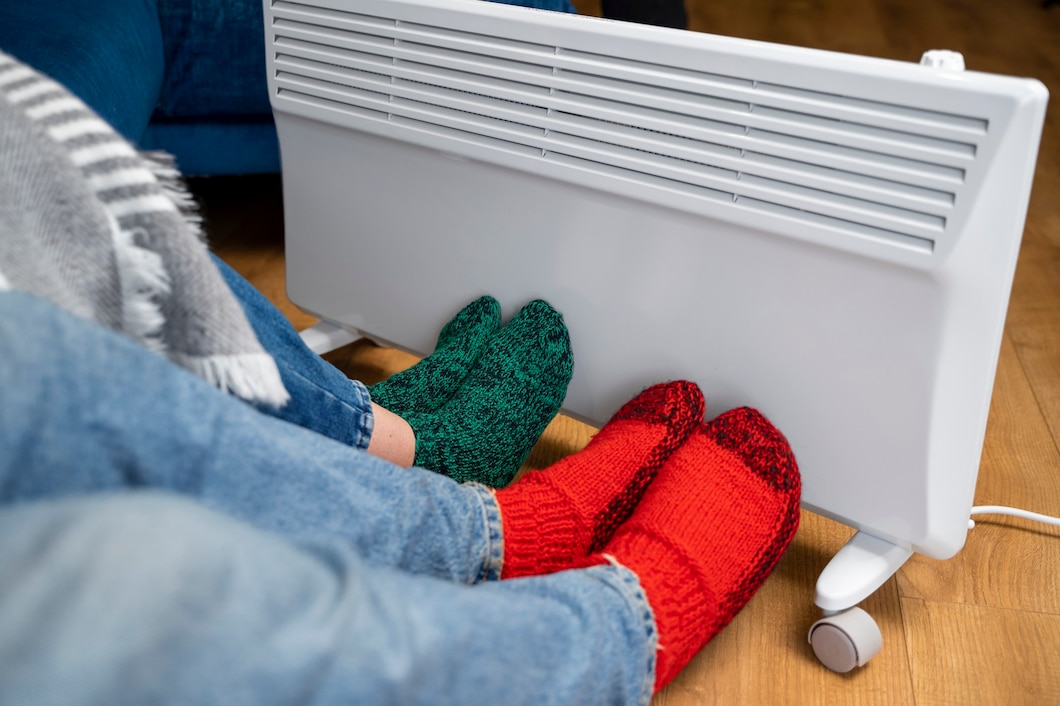Are you feeling a chill in your home, even when the heating is on? It might be because your central heating isn’t circulating as well as it should. But don’t worry, you can improve it without having to replace your radiators!
If you are a newbie to the term central heating system & its circulation, and not even using a radiator, this guide will make you aware of them too. But don’t go away! This lack of heating system technology should not make you feel embarrassed because you can be eligible for the first time central heating grant under the ECO4 scheme. The UK government offers grants to low-income households who are on government benefits. This new central heating uses the latest technology that provides the most efficient central heating circulation throughout all the rooms of your home with radiators in each room.
Let’s explore some simple ways to get your home feeling cosy and warm.
Understanding Central Heating Circulation
Let us first explore how central heating works in order to find solutions. Your home radiators are filled with hot water flowing from the boiler through the pipes, which heats up these radiators. When the water cools down, it goes back to the boiler for reheating before being circulated again. This is the same as having a huge cycle for generating heat!
Signs of Poor Circulation
Poor circulation may be behind these symptoms: cold spots on your radiators; strange sounds coming from your boiler; or difficulty getting the radiators warmed up quickly. In addition, you may experience warm air blowing into one room while another feels cold – this is also an indication of bad circulation within the house.
Simple Solutions
1. Bleed Your Radiators
Air in radiators may form pockets that block hot water circulation. Radiators ‘burp’ to expel trapped air when bled. You’ll need a radiator key and a towel to collect any water that drips out to bleed a radiator. Turn off your heating system and carefully open each radiator’s top valve until you hear hissing. When hissing ceases and water flows smoothly, shut the valve again. Bleeding radiators may drop boiler pressure, so check it afterward.
2. Check Your Thermostat
Please verify the thermostat is set up properly; this will regulate the heating in your room. Otherwise, in case your heater gets too cold, it might fail to work effectively meaning that you will be left freezing. Consequently, the home heat can remain constant hence control boils down to the thermostat (also take note that poor temperature conditions may lower productivity).
3. Clear the Clutter
Furniture and drapes impede radiators, which radiate heat into the room. Check your house for radiator obstructions. Even minor obstacles might affect how smoothly your heating system distributes warm air.
4. Insulate Your Home
Good insulation prevents heat from escaping via windows, doors, and the roof. Seal drafts around windows and doors using weather stripping or caulking. Insulate the attic or loft to prevent heat loss via the roof.
5. Upgrade Your Pump
Your central heating pump circulates hot water from the boiler to the radiators and back. If your pump is old or weak, it may struggle to circulate water. Upgrade to a stronger pump to increase circulation and keep your house warm.
6. Add a Magnetic Filter
Sludge and debris may block pipes in your central heating system over time, stopping water flow. A magnetic filter may collect dirt before it creates difficulties, enhancing circulation and heating system life. Magnetic filters are simple to install and maintain, making them an efficient solution to maintain your central heating system.
7. Balance Your System
It includes regulating hot water flow to each radiator to heat them equally. This keeps your house pleasant by preventing certain rooms from being too hot and others from getting cold. Balancing your system is difficult, therefore it’s better to hire a heating professional with the expertise.
8. Install Radiator Boosters
Small fans on top of radiators pump warm air throughout the room. They’re useful in big or poorly insulated rooms where radiators may not be adequate to stay warm. Radiator boosters are simple to install and may improve household comfort.
9. Consider a Power Flush
In case of the accumulation of grime and dirt in your heating system, using power flush may be advantageous. To remove blockages and bring back the movement within the system, the plumber applies water under high pressure for a mechanical cleaning. Although having a power flush done is expensive, it is something you should not think twice about if you want to stay warm during winter without expensive repair bills coming up.
Conclusion
It’s easy to improve the movement of the central heating in your UK home. With these simple tips, you might be able to keep your house warm this winter without having to buy new heaters. If you bleed your radiators, fix your pump, or add insulation, you can improve airflow and make your home more comfortable, even on cold days. If you don’t know where to begin, talk to a qualified heating engineer who can look at your system and give you advice on the best ways to fix it. Your house will feel cosy quickly if you work at it and know what to do.




